There’s huge potential for email to drive lead generation and engagement among this demographic, but key differences that marketers should be aware of in order to successfully target millennials – including ideal email content and device of choice.
Millennials are the second largest demographic in the UK, making up 21 per cent of the population, therefore it’s not surprising that marketers are increasingly focusing their efforts on understanding what makes them tick, in order to target millennials successfully. This generation, which includes those born between 1985-2000, is a unique group, having grown up in a world that is constantly connected, mobile and social – and many marketers are unsure as to how to reflect this in their campaigns.
According to Adobe, millennials spend six hours a day checking their emails, which means, for marketers, the opportunities to target millennials are almost endless – but that’s only if you get it right. Millennials are on-the-go, have a short attention span and tend to multi-task more than any other generation. Furthermore, those who were born post-2000, known as generation Z, are also starting to exert consumer influence and will further amplify the behaviours we are seeing in millennials. Brands need to recognise – and exploit – this lifestyle to win the hearts and purse strings of this audience.
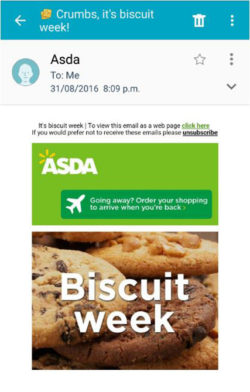
Grocery retailer Asda engaged through a fun and entertaining email last summer when TV hit ‘The Great British Bake Off’ contestants took on Biscuit Week. Asda joined in with failsafe biscuit recipes.
1. Target millennials by being fun, interactive and visual
Millennials are much more influenced by visual content. A recent UK DMA Consumer Email Tracking report revealed that 49 per cent of younger people are more enthusiastic about the use of pictures in an email compared to 40 per cent of other age groups. Videos also appeal to millennials, with 12 per cent preferring videos to be included in their emails, while just six per cent of non-millennials say the same. Social media, including Instagram, Snapchat and Pinterest are fuelling this image-driven culture, and marketers need to be savvy and capitalise on this when they can.
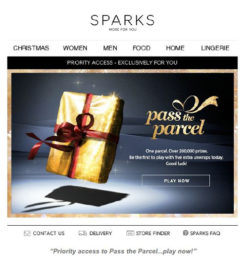
Marks and Spencer offered prizes with a festive game to engage via email. Analysis showed that referrals to M&S.com from the Pass the Parcel game had an impact on conversion – an overall uplift of nearly 8% during the campaign. Brand mentions were tripled compared to the weekly average and sentiment around the game was tracked between 94-97% positive. By the close of the campaign, there was a 74% user return rate. More than 1.3m registers resulted in almost 5.8m visits – highlighting deep user engagement and success in creating customer habit. Additionally, redemption of prizes in store meant a notable spike in footfall of nearly 15K extra customers through the doors.
On this note, incorporating social media feeds and notifications into emails is also important for millennials. Social media is a huge part of this generation’s day-to-day life, and email marketing campaigns need to take advantage of this. They want to share, pin and post, and will subsequently be much more receptive to brands that visualise and encourage this, whether it’s including highlights from Twitter or directing readers straight to their Instagram page.
Gamification is also proving to be hugely influential for this demographic group. They find interactive games and countdown timers much more appealing than Generation X, with 16 per cent of millennials saying they like them, compared to just seven per cent of older generations. Younger people enjoy game-like, entertaining emails, so marketers would be wise to make emails less transactional and more playful when tailoring their emails for this audience.
2. Remember – millennials are mobile
Millennials are without doubt the most phone-obsessed age group. It’s therefore not surprising that they are more likely to manage their email accounts on a smartphone, as opposed to a tablet, desktop or laptop. Young people are nomadic creatures who consume content on-the-go, therefore emails need to be clear, succinct and rendered coherently. 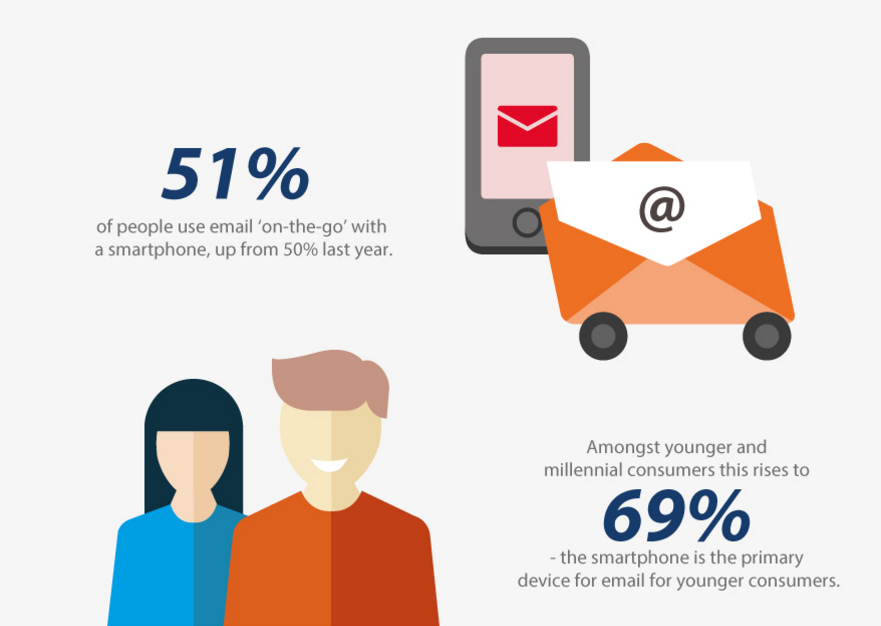
Optimising email for millennials via mobile can be as simple as shortening subject lines so that they read better on a mobile screen and being concise in email copy so that mobile-viewed emails translate onto the smaller screen. Using geolocation data to send personalised emails depending on where the reader is, is also a good idea. Tailored emails that respond to where and how the recipient is consuming the content will drive engagement significantly.
It’s also worth noting that the mailbox provider chosen by this demographic also shapes their behaviour. No longer are the likes of Hotmail or Yahoo the mailbox of choice; instead 70 per cent of millennials use Gmail, which is largely down to the fact that this comes pre-installed on every Android device. This is significant as Gmail is a mailbox provider that is focused on determining good senders through positive and negative engagement factors, such as forwards, replies and spam notifications. Higher engagement levels are therefore even more important for marketers trying to tap into the millennial audience.
3. Appeal to the savvy shopper generation with email discounts


Gap offered a discount as a welcome perk for new email subscribers.
There’s a difference in the way millennials share their information with brands compared to other generations; this needs to be taken into account when initiating contact with this audience. Nearly half (46 per cent) of millennials choose to sign up to a brand’s email list if they are offered a discount on what they are purchasing, compared to just over a third (36 per cent) of non-millennials.
Furthermore, free delivery, free samples and gifts, as well as competitions for prizes, resonate much more with this audience and will often be the reason they hand over their contact details.
Older demographic groups, on the other hand, are much more likely to share their data if they are a regular shopper, they are offered a loyalty programme or they trust the brand. Millennials are more saver-savvy and use and value their emails in an entirely different way to older generations.
4. Give millennials more options when it comes to unsubscribing
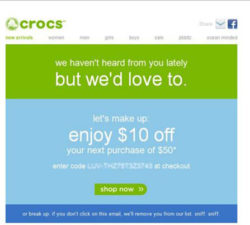
Crocs shoe retailer gave some love and a discount to a potential unsubscriber, to persuade them to remain as a customer.
In order to keep younger consumers interested, it’s also important to keep a watchful eye on how many emails you are sending. Indeed, less is more when it comes to targeting millennials. According to the UK DMA, 64 per cent of millennials want to reduce the frequency of emails they receive. Despite this, their tolerance levels are often quite high. They tend to be less likely to unsubscribe from brand emails, even if they don’t recognise the sender. While this may seem positive for brands that send a high volume of messages, this approach is unlikely to be effective in the long run. While they may not unsubscribe, the chances are that they will stop engaging with the brand.
It’s no secret that millennials are much more social and connected than their parents and, as such, their viewing and purchasing habits are extremely different.
Marketing strategies subsequently need to be completely reworked when targeting this audience. Indeed, email is now the channel that marketers need to focus on. If brands implement an email campaign that is visual, mobile, concise and has the added incentive of a discount, they will find themselves resonating with one of the most lucrative audiences in today’s industry.
Read also:
Hail the king of the marketing channels: email takes the crown (but it still fails to sparkle)
Using personalisation and contextual marketing to transform email marketing campaigns

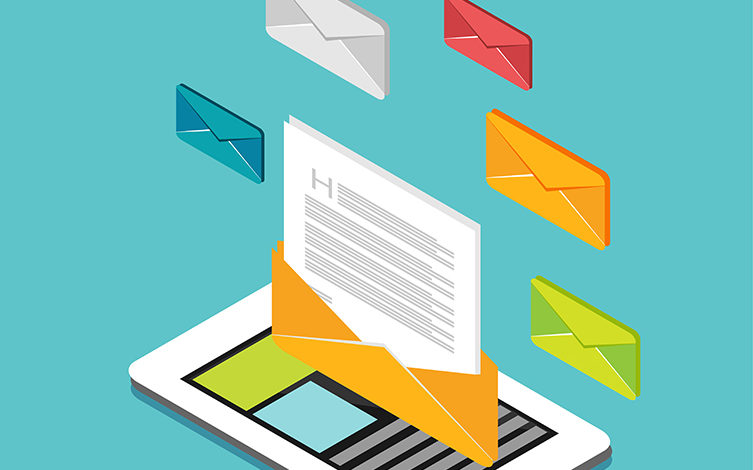










Leave your thoughts